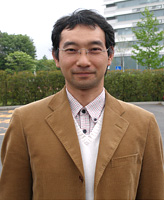| Q. Can the technology be applied on the ground, for mobile or spatial communications, such as for airplanes? I think this will be possible. We were had a certain degree of confidence about the success of inter-orbit communications. On the other hand, for laser communications with a ground station, as with NICT, we had thought our chances were a bit slim. But as it turned out, even with the poor conditions in Tokyo, where the air is not really clear and the city is always bright, somehow we were able to obtain positive results. So the technology will likely work on the ground, despite the weather. With the technology developed for Kirari, I think that high-speed laser communications between a satellite and an aircraft will also be feasible. Q. What are your thoughts about the next steps? I would say that Kirari and ARTEMIS are the first step, as they are the first experiment done in the world. Their communication speed was 50 Mbps, which is not very fast. I think that the next generation of communication speed will be in Gbps, and I also hope that the laser communications equipment will be smaller and lighter. Through future optical inter-orbit communication experiments with ARTEMIS, and ground-to-satellite optical experiments, Kirari will continue accumulating data, and we will be able to advance our research into the next phase.  It? possible that laser beams will be used not only in near-Earth communications, but also for transmitting data from a deep-space probe or a lunar base to a relay satellite. I am interested in working on communication devices for such space exploration in the future. It? possible that laser beams will be used not only in near-Earth communications, but also for transmitting data from a deep-space probe or a lunar base to a relay satellite. I am interested in working on communication devices for such space exploration in the future.Japan is proud of its world-class laser technology, and I would like to work to maintain our leading position at all times.
|
| 1 |